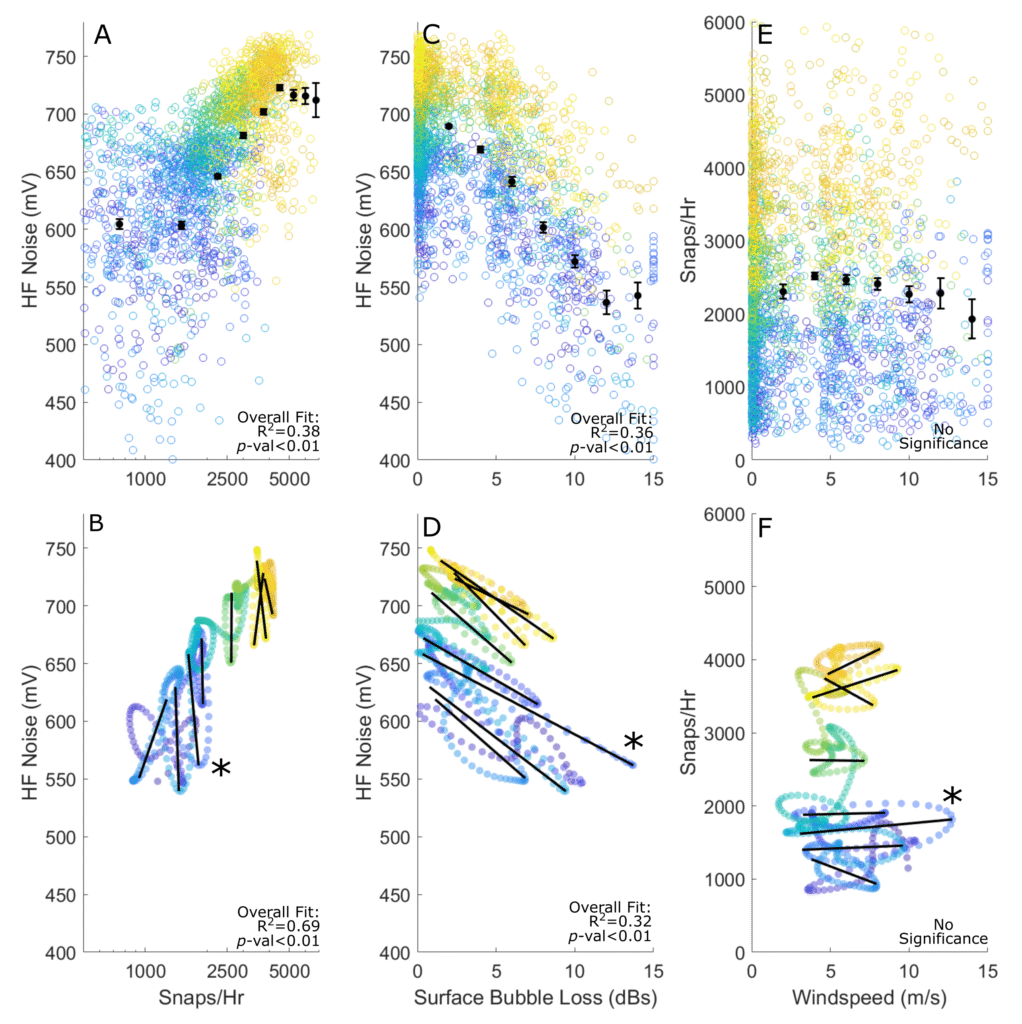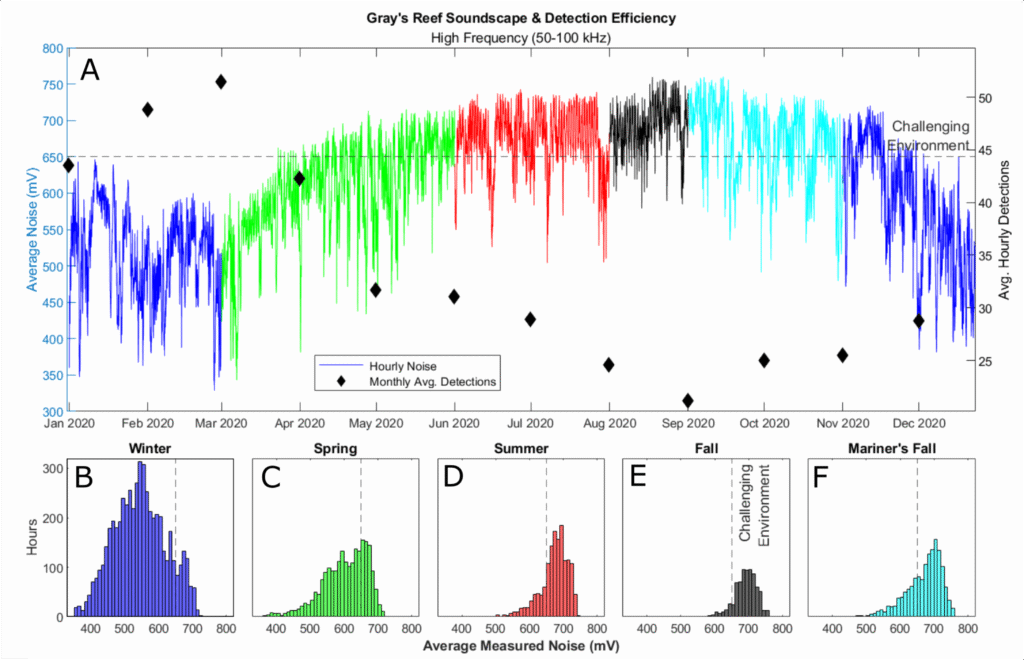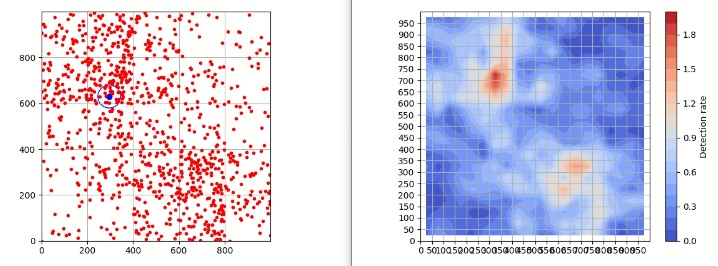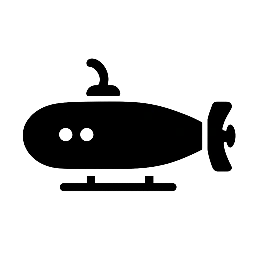A Reef’s High-Frequency Soundscape and the Effect on Telemetry Efforts: A Biotic and Abiotic Balance
This journal article builds upon my previous research. Gray’s Reef presents a noisy acoustic environment primarily due to the activity of snapping shrimp. When the wind blows surface attenuation reduces noise interference, enabling more transmission detections. Although the shrimp continue snapping consistently, the noise is masked by surface bubbles and the water column becomes a more optimal acoustic environment for acoustic telemetry.

Analyzing Tidal, Diurnal, Synoptic, and Seasonal Drivers of Acoustic Telemetry Efficiency on a Coastal Reef
A conference proceeding that laid the foundation for my upcoming publication.There were significant increases in background noise during nighttime and in warmer summer waters which corresponded with decreased detection efficiency of fixed transmitters. While high winds hinder telemetry in many studies, storms were beneficial to telemetry efforts in our noisy and challenging environment.

The Rational Selection of Goal Operations and the Integration ofSearch Strategies with Goal-Driven Autonomy
I was the proud oceanographer in a room with electrical engineers. The NSF Smart & Autonomous Systems Project brought together UGA, Wright State, Georgia Tech, and Michigan State University researchers to design a strategy for autonomous underwater vehicles to explore a designated area. My role was to create the operational environment, designing challenges for the AI path-planning systems to overcome.

Modeling Acoustic Telemetry Detection Ranges in a Shallow Coastal Environment | Proceedings of the 15th International Conference on Underwater Networks & Systems
A peer-reviewed conference paper stemming from the NSF Smart & Autonomous Systems project. I created a probability detection model for high-frequency acoustic transmissions, later refining it into a dissertation chapter.

